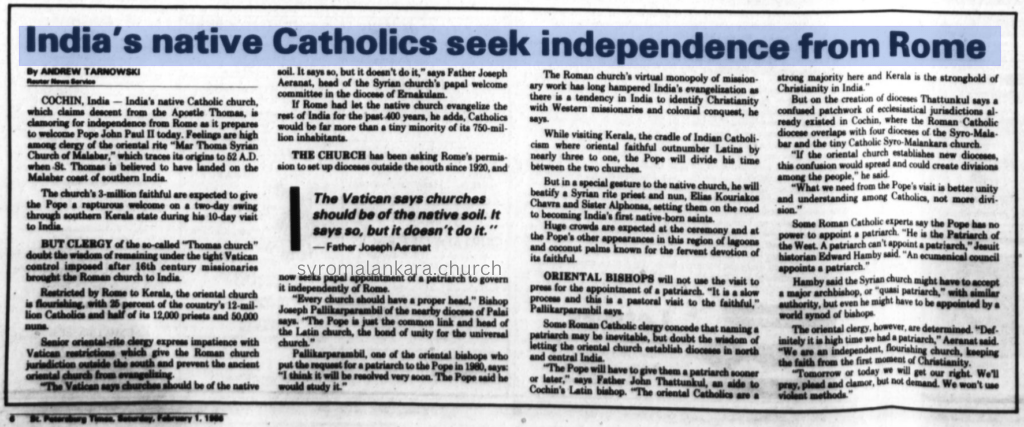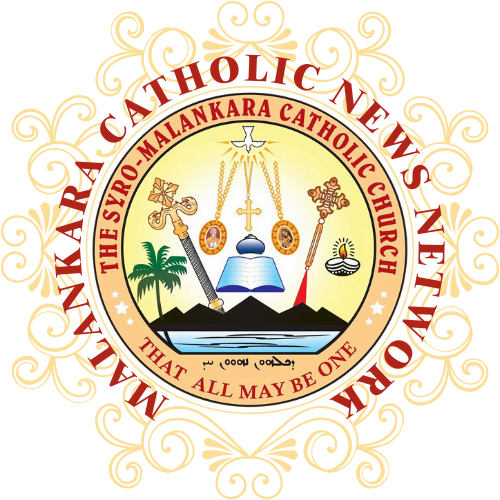Cochin, India, February 1, 1986 – As Pope John Paul II’s visit to India commences, the Syro-Malabar Church, along with the Syro-Malankara Church, eagerly anticipates the Pontiff’s arrival. Both Churches, rooted in the apostolic tradition of St. Thomas, are looking towards a future of greater ecclesiastical independence from Rome.
The Syro-Malabar Church, which, like its sister Syro-Malankara Church, prides itself on a heritage that harks back to 52 A.D., is set to welcome the Pope with open arms. However, there is a resonant voice among the clergy for ecclesiastical self-governance.
While the spotlight of the visit is on the Syro-Malabar Church, members of the relatively smaller but equally ancient Syro-Malankara Church share similar sentiments on the issue of autonomy. Both churches share a deep connection to the Apostle Thomas and have been integral parts of the Christian ecclesiastical history in India.
The Syro-Malabar Church’s 3-million faithful, paralleled by the devout members of the Syro-Malankara Church, are prepared for a jubilant welcome for the Holy Father in Kerala. This celebratory atmosphere is tinged with the hope for a recognition of the churches’ rights to self-administration.
The Syro-Malabar Church is currently confined to the state of Kerala, yet it thrives with 25 percent of the nation’s Catholics and a substantial portion of its clergy. The senior oriental-rite clergy are vocal about their impatience with the Vatican’s restrictions, which similarly affect the Syro-Malankara Church, limiting its reach and preventing it from wider evangelization.
Father Joseph Aernat, echoing the thoughts of many within the Syro-Malankara and Syro-Malabar Churches, calls for the appointment of a patriarch to govern independently of Rome. Bishop Joseph Pallikaparambil of the nearby diocese of Palai, notes the Pope’s role as a unifier, rather than a direct administrative authority over the oriental rites.
The Pope’s visit includes the beatification of a Syrian rite priest and nun, a gesture of significant importance to the Syro-Malabar faithful, as it marks the first steps towards recognizing India’s first native-born saints.
While the immediate goal of the Pope’s visit is not to discuss the establishment of a patriarch, the desire for autonomy within the Syro-Malabar and Syro-Malankara Churches remains a poignant subject. Some Roman Catholic clergy in the region acknowledge the possibility and even inevitability of such a development.
Jesuit historian Edward Hamby points out that the Pope may not have the authority to directly appoint a patriarch, hinting that a major archbishop or “quasi patriarch” might be a viable alternative, requiring broader ecclesiastical consent.
The sentiments of the Syro-Malankara Church clergy align with their Syro-Malabar counterparts, firmly advocating for an autonomous status that reflects their historical and theological significance. Their approach is one of peaceful perseverance, seeking rightful recognition through prayers and respectful advocacy.
As the papal visit progresses, the anticipation for enhanced unity and clarity on these matters grows within the Syro-Malabar and Syro-Malankara communities, strengthening their resolve to uphold the unique traditions and independence of their ancient Churches.
Copyright: St. Petersburg Times 1 Feb 1986


